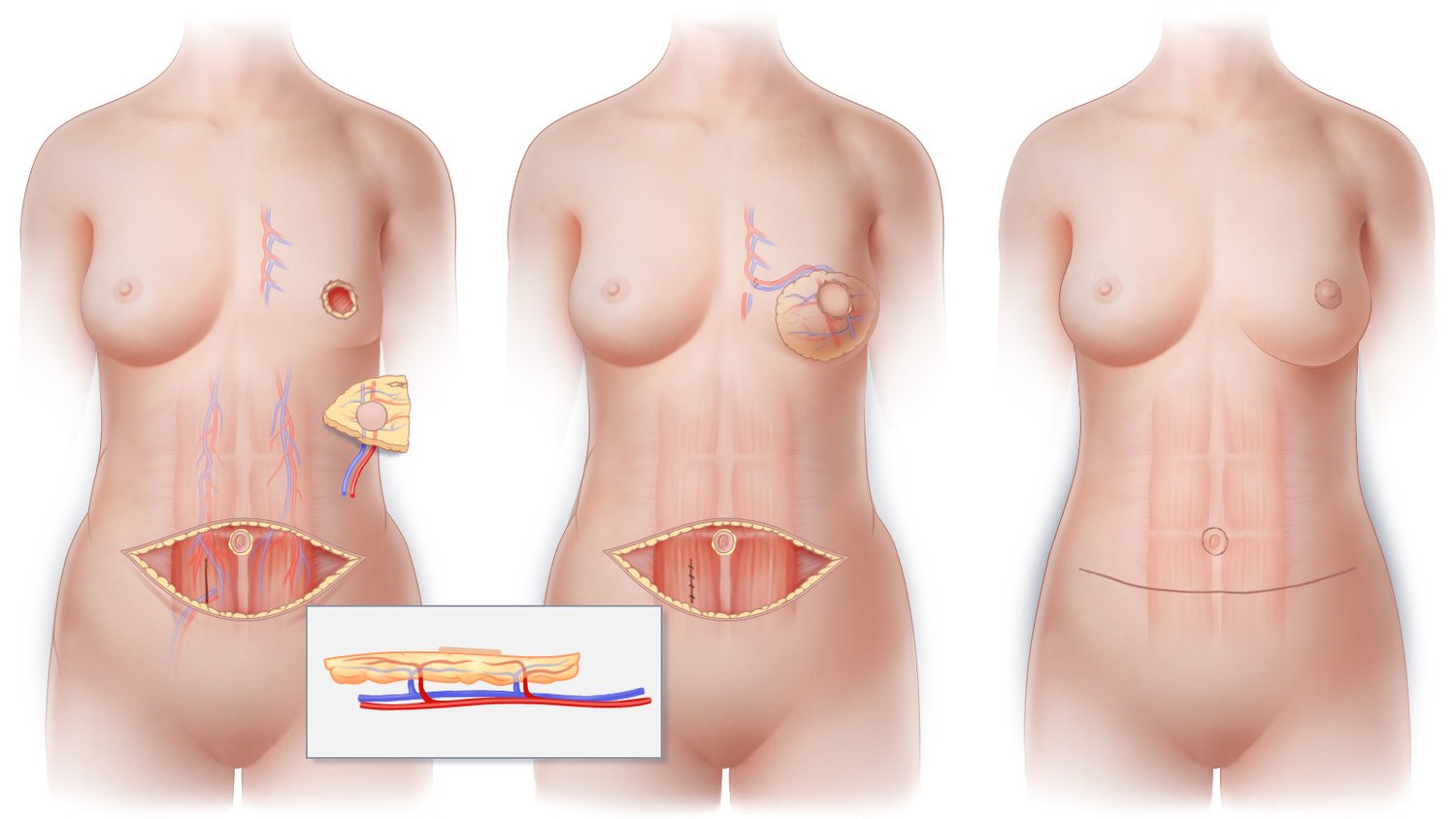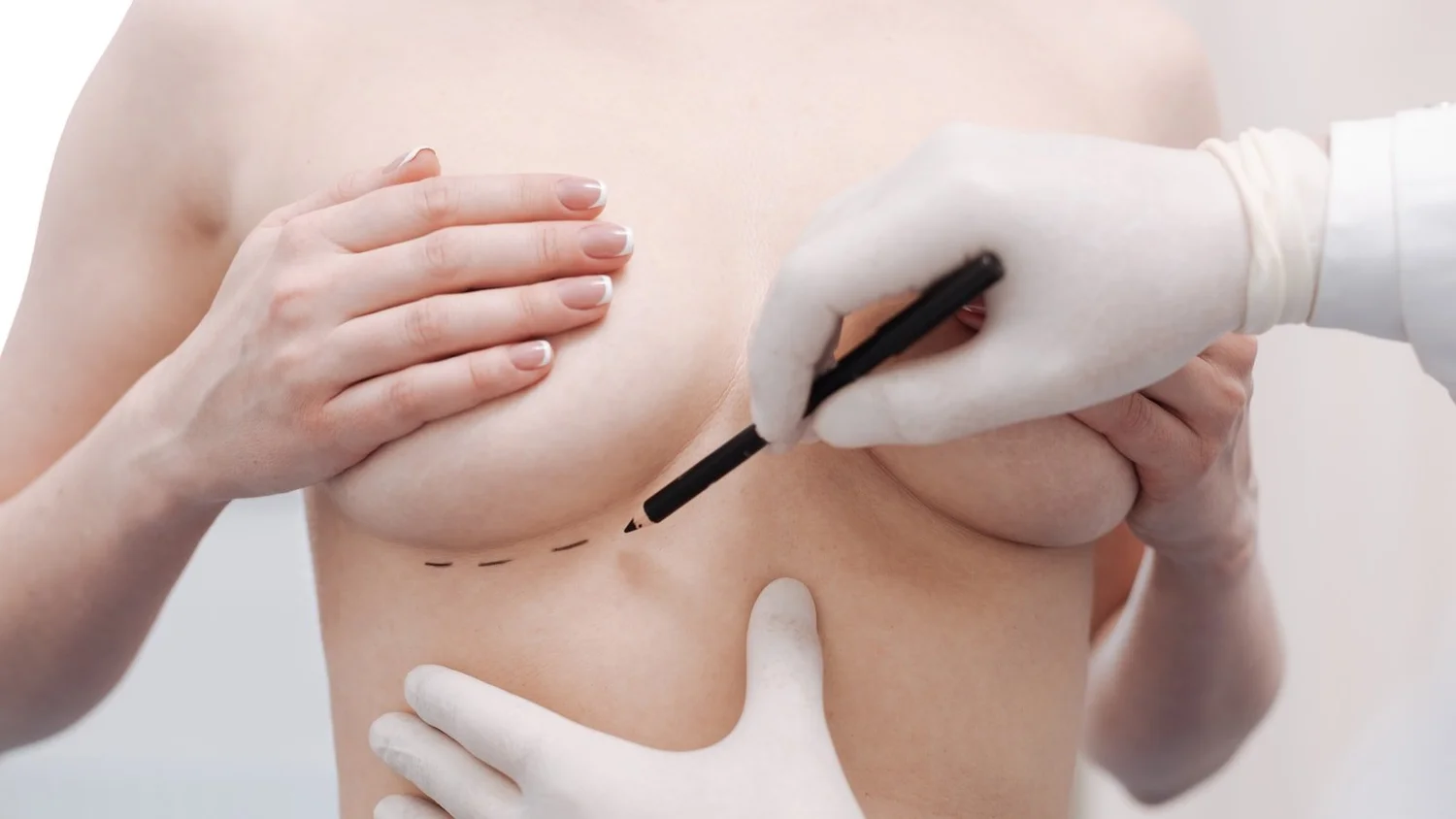One of the best forms of breast reconstruction is a “DIEP flap” (Deep Inferior Epigastric Perforator flap). During the procedure, your reconstructive plastic surgeon reconstructs your breast using skin and fat from the lower abdomen, and connects blood vessels in order to provide immediate blood flow.
Since no abdominal muscles are removed during DIEP flap surgery, the recovery period is shorter than with other, older treatments (such as TRAM – transverse rectus abdominal muscle – flap surgery). Breast Flap
Is DIEP flap surgery the only method available for reconstructing breasts?
A breast can be reconstructed in a variety of methods. If you want to undergo breast reconstruction, you should go through the advantages and disadvantages of each procedure with your doctor. There are two primary categories of reconstruction:· Reconstruction of the breast using flaps made of tissue from various body parts.· Implant reconstruction: Rebuild your breast with a silicone or saline implant.What occurs before a DIEP flap operation?
Your healthcare professional will provide detailed information on preparing for DIEP flap surgery. You will undergo a physical examination and blood testing to ensure you're in good enough health for surgery. To plan the operation, your surgeon will take pictures of your breasts and abdomen, and will often arrange for additional imaging tests.You ought to:· Exercise lightly in the weeks and months before surgery to strengthen your muscles and enhance your cardiovascular health.· Stop smoking and stay away from anything that contains nicotine.· Eat a healthy dietWhat occurs during a DIEP flap procedure?
Typically, a DIEP flap procedure lasts six to eight hours. A tissue expander may have been inserted under the skin of the chest of certain patients undergoing delayed reconstruction. The tissue expander, if you had one, will be taken out during your flap operation.Here's what you may anticipate generally:
Anaesthetic: A vein in your arm is used to provide anaesthesia. To prevent you from feeling any discomfort throughout the treatment, anaesthesia helps you fall asleep.Incision: The surgeon will make an incision in your lower abdomen; this incision is made between your belly button and the top of the pubic hair region, running from hip bone to hip bone. This is the same tissue that is removed in a “tummy tuck” procedure.Tissue removal: A single flap of skin including fat and blood arteries, is removed from your belly. There is no muscle removal by your surgeon.Your surgeon creates an incision in your chest to transfer tissue (usually the same incision line from your mastectomy or lumpectomy). They move the flap to the breast location and delicately join the flap's blood vessels to those in your chest.Breast shaping: Following the attachment of the blood vessels, your surgeon will shape the tissue to most closely match the normal contour of a breast.The wounds on your chest and abdomen will likely get drained by your surgeon. Drains assist in fluid removal, edema reduction, and the healing process. They will be taken out 1-2 weeks after the operation.Closure: Your surgeon uses stitches close the incisions made in your chest and abdomen (they adjust your abdomen skin, so your belly button is still in a natural position).What are the advantages of DIEP flap breast reconstruction?
More of a natural appearance: Compared to implants, many individuals believe that utilizing their own tissue provides new breasts with a more natural shape and feel.A procedure that spares muscle: You retain your abdominal strength since your surgeon doesn't remove muscle from your abdomen. Additionally, recovery time is quicker than with other flap operations.Permanent outcomes are provided via DIEP flap surgery. If you gain or lose weight, implants may burst, harden, move, or need to be modified.Breast sensation may be preserved. Your restored breast may retain some feeling. Ask your surgeon whether it's possible to move sensory nerves from the flap to your chest.
What dangers may accompany DIEP flap surgery?
Although they are uncommon, complications following DIEP flap surgery might include:Hernia: Following this operation, a portion of your intestine can push through a weak place in your abdominal muscles.Lumps: Firm scar tissue that feels like a lump may develop in the rebuilt breast. The swelling could disappear on its own or be removed by your surgeon.Necrosis: Some portions of tissue may become hard if the transferred flap does not receive enough blood. The dead tissue must be removed by your surgeon. Only very rarely does the whole flap become necrotic and require removal.After a DIEP flap, breast reconstruction, healing and rehabilitation may be simpler than most patients anticipate. With the use of rapid recovery (“ERAS”) protocols, most patients suffer little pain following surgery, need little to no drugs, and can leave the hospital in two to three days.









1
Some really excellent info, Sword lily I detected this.
There is definately a lot to find out about this subject. I like all the points you made
You have noted very interesting details! ps decent web site.
This post post made me think. I will write something about this on my blog. Have a nice day!!
Good article with great ideas! Thank you for this important article. Thank you very much for this wonderful information.
This post post made me think. I will write something about this on my blog. Have a nice day!!
Comments are closed.